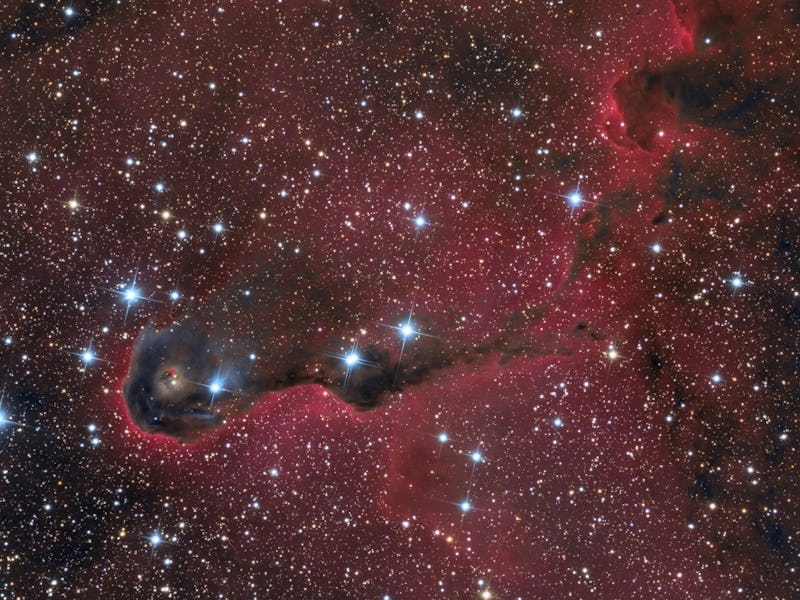This cloudy collection of dust and gas is known as the Elephant’s trunk, for it’s long and snout-like shape.
The Elephant’s Trunk nebula resides in the young star cluster Complex 1396 within the constellation Cepheus. The nebula stretches 20 lightyears long and this image alone spans the size of two of Earth’s full moons.
The image was captured with more modest instruments from the Sedona Stargazer Observatory using a narrow band filter that transmits light from the ionized hydrogen atoms within the cluster, which gives it this brilliant highlight. It was then filled in with false color by Stephen Leshin to make visible all of the action in this dense formation.
When you think “Elephant’s Trunk” you might think of Dumbo — which is actually quite fitting because the nebula is a birthplace for baby stars.
The Elephant’s Trunk nebula has very high compression from surrounding stars that create a lot of pressure, making it the perfect place for protostars, or new stars, to form. In 2003, infrared images from the Spitzer Space Telescope of the Elephant’s Trunk revealed that there are several young stars — less than 100,000 years old — within the nebula.
A 2003 Image of the Elephant's Trunk Nebula shows the early stages of star development.
The constellation Cepheus was named after the King of Ethiopia in Greek mythology and was one of the 48 constellations mapped out by philosopher Claudius Ptolemy in the early 100s A.D.
The Elephant’s Trunk nebula is about 2,400 light years away from Earth and on a clear night can be viewed in the northern sky by the naked eye.
